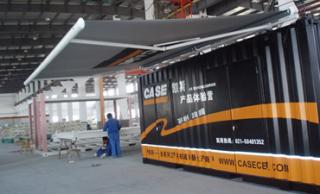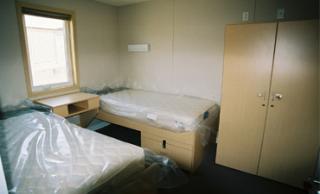

- Features
- Technical Data
- Application



As we said above, when cutting a shipping container or removing any of the paneling, it's structural integrity is compromised. As an extreme example, consider the removal of all a container's corrugated paneling along the length of one side (see the images below). Without reinforcement, the container deforms and then fails structurally. As a general rule, whenever remove portions of the panelized corrugation, steel framing will be required to frame out the opening. In addition, column and roof support will be necessary depending on the size of the opening(s) and roof/wind loads. The conclusion is that the cutting square should be considering the strength of the whole parts.
|
Number of Containers Stacked on One |
Total Height of Stack |
Safety Factor on Corner post loading |
|
8 |
9 |
1.80 |
|
9 |
10 |
1.60 |
|
10 |
11 |
1.44 |
|
11 |
12 |
1.31 |
|
Number of Containers Stacked on One |
Total Height of Stack (m) |
Safety Factor on Corner Post Loading |
|||
|
with payload density = 0.60 g/cc (22,150 kg gross) |
with payload density = 0.66 g/cc (24,000 kg gross) |
with payload density = 0.75 g/cc (27,150 kg gross) |
with payload density = 0.85 g/cc (30,480 kg gross) |
||
|
8 on 1 |
23.3 |
2.20 |
2.03 |
1.80 |
1.60 |
|
9 on 1 |
25.9 |
1.95 |
1.80 |
1.59 |
1.42 |
|
10 on 1 |
28.5 |
1.76 |
1.62 |
1.43 |
1.28 |
|
11 on 1 |
31.1 |
1.60 |
1.48 |
1.30 |
1.16 |
Conclusion: Stacking ISO containers 10 high on land is reasonable, and stacks as high as 12 may be possible depending on the type of container purchased and on the loading of the container with Off-Axis detector elements. For a final detector design, good engineering practice would require that the corner posts of the selected containers be loaded to failure to more accurately determine the safety factor of the stacked array.









